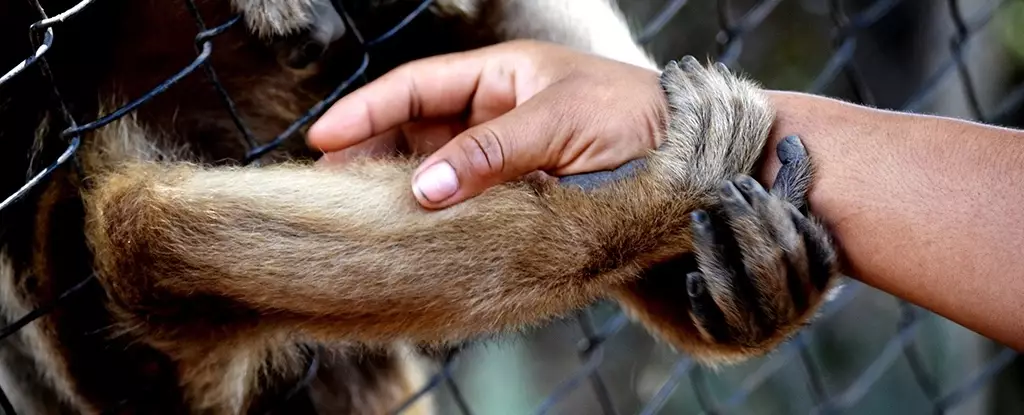The COVID-19 pandemic brought about unprecedented changes worldwide, affecting every aspect of daily life. This also included the lives of zoo animals, who suddenly found themselves without the usual crowds of visitors passing by their enclosures on a regular basis. A study published in 2022 delved into how primates specifically reacted to this shift in their environment, focusing on bonobos, chimpanzees, western lowland gorillas, and olive baboons. The researchers found that these animals made adjustments in their behavior during the period when visitors were absent, shedding light on the importance of visitor interactions for the welfare of zoo animals.
The study conducted by researchers at Nottingham Trent University and Harper Adams University in the UK observed the behavior of primates at Twycross Zoo and Knowsley Safari during both periods with and without visitors. The findings revealed interesting insights into how different primate species responded to the changes in their environment. When visitors were present, bonobos and gorillas spent less time alone, indicating a shift towards more social interactions. Chimpanzees, on the other hand, showed an increase in eating and engaging with their enclosures when zoos reopened. The olive baboons exhibited less sexual and dominance behavior in the presence of visitors, while also displaying a preference for approaching visitor cars over ranger vehicles.
The researchers noted that the behavioral changes observed in the primates highlighted their adaptability to varying environments. The ability of these animals to adjust their behaviors and enclosure use in response to the presence or absence of visitors suggests a level of cognitive flexibility and resilience. While some changes, such as increased social interactions among bonobos and gorillas, could be seen as positive, there were also potential disruptions, such as gorillas spending less time resting due to visitor activity. Despite these challenges, the study emphasized the importance of providing zoo species with environments that allow for active adaptation to promote their welfare.
The research findings provide valuable insights for animal welfare researchers and zoo management in understanding the complex dynamics of visitor interactions on wildlife. The study highlighted the need to consider the effects of visitor presence on animal behavior, including the threshold at which animals may become overstimulated or disrupted by visitor activity. As the research team plans to further explore the impact of visitor numbers on a wider range of species and individuals across different zoo settings, the goal is to improve the overall well-being and care of zoo animals. By continuing to study how visitor interactions can influence animal behavior, researchers aim to enhance the design and operation of zoos and wildlife parks to ensure the welfare of captive animals remains a top priority.


Leave a Reply